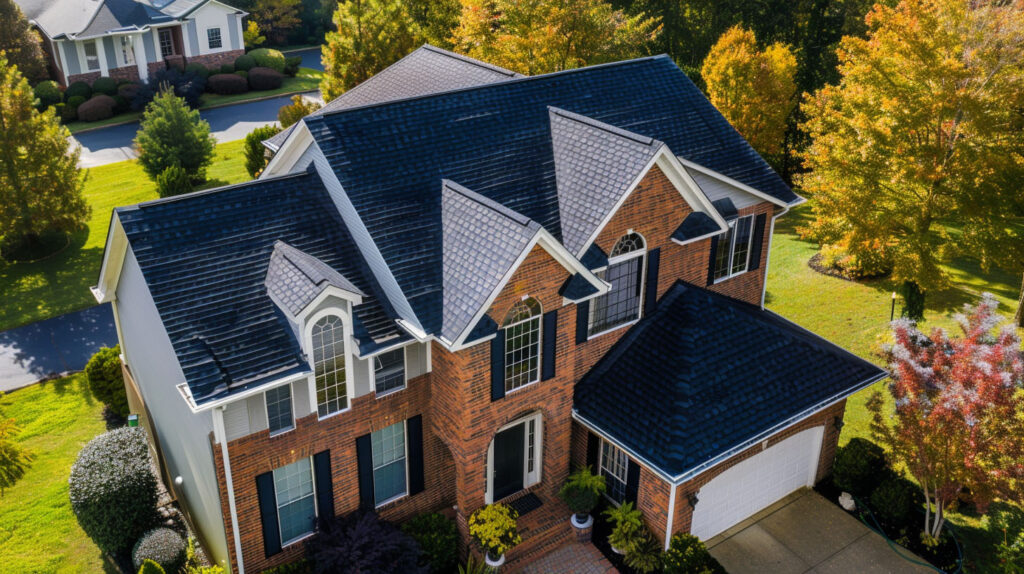Home Insurance and Roofing Claims: What You Should Know
Roof damage can strike unexpectedly, leaving your home and finances vulnerable in Burbank, CA. That’s where home insurance steps in, easing the burden of costly repairs. Filing an insurance claim for roof damage, however, can feel overwhelming without the right guidance. Understanding how your policy works and knowing what to expect in the insurance claim process is essential to protect your home. At Specialist Roofing & Repair, we’ve helped countless homeowners navigate this process with ease. Let’s explore what you need to know.
Understanding Home Insurance Coverage for Roofs
Your home insurance policy provides valuable protection, but not all roof damage is treated equally. Many homeowners policies cover caused by sudden events, such as fallen trees or severe weather, but may exclude long-term issues like poor maintenance.
To make the most of your roof insurance coverage, review your policy details thoroughly. Look for what’s defined as a covered event, which determines when you qualify for reimbursement. The clarity you gain here is the first step in navigating roof repairs successfully.
Types of Roof Damage Typically Covered by Insurance
Various types of roof damage can be covered under a homeowners policy, ensuring homeowners have peace of mind. Commonly accepted events include storm damage, such as missing shingles or water damage from severe weather. Damage from fallen trees or hail is also typically recognized. The insurance claim process will assess the extent of the damage and determine whether necessary repairs align with policy coverage. Understanding these elements can significantly affect potential replacement costs versus the actual cash value when filing a roofing insurance claim.
Common Exclusions in Homeowners Insurance Policies
Understanding common exclusions in homeowners insurance policies is crucial for effective risk management. Often, damages stemming from routine wear and tear, lack of maintenance, or age-related deterioration are not covered. Additionally, many policies exclude damage caused by natural disasters like floods or earthquakes unless specifically endorsed. Understanding these limitations can help homeowners avoid unnecessary disappointments during the claims process and equip them to engage with their insurance provider more effectively when assessing potential roof damage.

When Should You File a Roofing Insurance Claim?
Timing is critical when filing a roof insurance claim. You should take action as soon as you’ve confirmed caused by a covered event, such as storm damage or a fallen tree. Filing promptly protects you from further issues and keeps the insurance process on track.
Consult with your provider if you’re unsure about the cause of the damage. A swift and accurate start can help you navigate the claims process more efficiently and ensure your roof gets the repairs it needs.
Signs of Roof Damage That Warrant a Claim
Time Limits and Deadlines for Filing Claims
Navigating the claims process requires an understanding of specific time limits imposed by your insurance provider. Typically, homeowners must file roofing insurance claims promptly, often within a designated period following the event causing damage. Failing to observe these deadlines may lead to reduced settlements or even denial of the claim altogether. Regularly reviewing your insurance policy can clarify your obligations and ensure peace of mind, allowing you to address the extent of the effectively and timely.
Steps to Take Immediately After Roof Damage
Taking the right steps immediately after sustaining roof damage is crucial. Begin by performing necessary temporary repairs to prevent further loss, like covering leaks with tarps.
Document the damage thoroughly before making changes and familiarize yourself with what your insurance policy covers. These actions set the stage for filing a smooth insurance claim and accelerate the claim process. Having a reliable contractor, such as Specialist Roofing & Repair, on your side can also streamline repairs and ensure your home’s protection.
Documenting the Damage with Photos and Notes
Accurate documentation is a powerful tool in the insurance claim process. Capture:
- Clear photographs of the damage from multiple angles.
- Detailed notes, including the cause of damage and its extent.
- Any evidence of events like fallen trees or storm impacts in the area.
- Receipts for any immediate repair costs incurred.
This documentation gives the insurance adjuster an evidence-based understanding of your claim. It will validate the need for repairs or a replacement and leave no room for disputes. Keep these records on hand throughout the claims process.

Protecting Your Home from Further Loss
Preventative measures after roof damage can save your home from added expenses.
- Perform temporary repairs, such as using tarps or sealants, to cover leaks.
- Clear away debris, preventing water pooling and additional damage.
- Consult a professional roofing contractor to assess further risks.
These measures ensure you mitigate further issues while awaiting the insurance company’s next steps. Moreover, insurance providers may reject claims if it’s clear no attempt was made to limit further losses, so being proactive is vital.
The Insurance Adjuster Inspection Process
The inspection by your insurance adjuster determines the next steps in your claim. As part of the claims process, the adjuster evaluates the extent of roof damage and calculates repair or replacement costs.
Being prepared for this inspection ensures your claim is processed fairly. Collaborating with an expert roofing contractor, like Specialist Roofing & Repair, helps present documentation and repair estimates effectively, ensuring all damage is accounted for during the evaluation.
What to Expect During the Inspection
During a roof inspection, an insurance adjuster examines the roof’s surface, flashing, and gutters for damage. Assess whether the issues stem from a covered event like storm damage.
Your adjuster will also calculate repair or replacement costs based on their findings. It’s important to ensure notice all damage, as incomplete assessments can reduce payout amounts.
Having your contractor on-site can ensure the adjuster identifies every issue during this inspection. A professional advocate supervising the evaluation bolsters your chances of a fair settlement.
How to Prepare for the Adjuster’s Visit
Preparation is vital for a smooth inspection. Here are three steps to take:
- Have your roofing contractor accompany you to provide detailed evidence and repair cost estimates.
- Present all documentation, including photos and receipts, to highlight the claim’s validity.
- Ensure necessary repairs versus replacements are clarified to support the case for reimbursement.
With everything organized, the claims process becomes streamlined, and you safeguard your settlement potential.

What’s Next
Navigating the complexities of roofing insurance claims can feel daunting, but understanding the essentials equips homeowners for success. Timely reporting of damage, thorough documentation with photographs, and awareness of policy specifics can significantly impact the claims process. Consulting a professional roofing contractor—such as an Owens Corning Platinum Preferred Contractor or a Polyglass Quantum Contractor—ensures accurate assessment and necessary repairs. With informed decisions and prompt action, you can seek a fair settlement and protect your investment, ultimately achieving peace of mind in the face of unforeseen roof damage. Additionally, working with a BBB A+ Rated contractor further enhances your confidence in the claims process.
Frequently Asked Questions
Is it worth claiming roof damage on insurance?
Claiming roof damage is often worth it if repairs exceed your deductible. For major issues like extensive storm damage or water intrusion, your home insurance can substantially offset repair costs, potentially allowing for reimbursement on replacement costs or repairs.
Does homeowners insurance increase after a roof claim?
Homeowners insurance rates may rise after a roof claim, as insurers evaluate risk based on past claims. However, a new roof reduces the chance of future issues, which may balance premium adjustments. Consult your insurance provider for clarity on specific policies.
Read our blog: The Dangers of a Sagging Roof and What to Do



